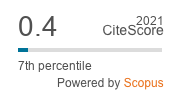Molecular probe, colony structure and SEM of antennal sensillae substantiate intermediate workers of Oecophylla smaragdina (Fab.) as typical worker
DOI:
https://doi.org/10.33307/entomon.v41i4.220Keywords:
Oecophylla smaragdina, typical worker, molecular probe, SEM antennal sensillaeAbstract
The polymorphic colony of arboreal weaver ant Oecophylla smaragdina Fabricius has three categories of workers designated as typical, major and minor. The colony structure fluctuated sharply with seasons but the numerical ratio of worker castes always remained as 65:25:10. Typical workers have highest number of sensillae/unit area on the terminal segment of antenna and all the above characters established their role in the colony different from major and minor workers. Microsatellite DNA analysis of worker castes indicated high degree of genetic diversity, heterozygocity and genetic polymorphism among three worker castes, reproductive males and females. Mitochondrial DNA analysis proved that all the three categories of worker castes were developed from eggs of a single queen.
Downloads
Published
How to Cite
Issue
Section
License
Copyright (c) 2016 ENTOMON

This work is licensed under a Creative Commons Attribution-ShareAlike 4.0 International License.


